Wet Sanding Metallic Base Coat [Finish in 3 Steps]
Your favorite car must look gorgeous and you just cannot compromise with the process when you are painting it. There is a wide range of paint methods to choose from. However, many people opt for metallic car paint. This is a great option if you want to give your car a standard finish. Metallic paint is highly resistant to sunlight fading and bleaching.
Moreover, if you manage to set a proper metallic base coat to your vehicle it will last longer than your imagination. Also, it increases the resale value of the vehicle. Therefore, there should a proper application method for this paint.
Nonetheless, the application is not that easy. Sometimes it is harder to set the metallic base coat properly. So, the user feels the urge to sand it prior to its cleaning. To come up with the solution many think of wet sanding metallic base coat.
Today, we will answer all your questions and clear your doubts everything regarding it. Stick with us till the end.
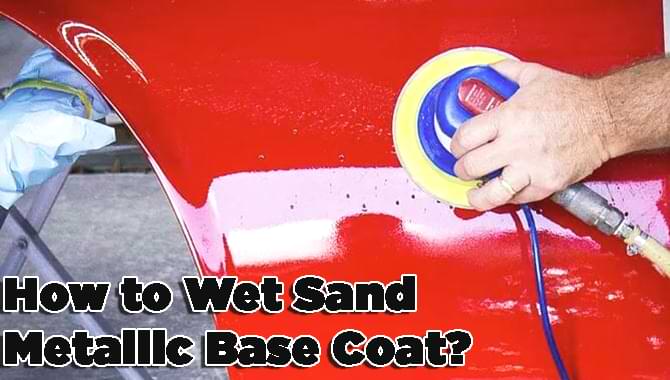
Table of Contents:=>
Can You Sand Metallic Base Coat?
Well, there are mainly two types of sanding processes. They are dry and wet sanding. Now the question is, can a metallic base coat be sanded anyway? Well, the answer is not straight anyway. First of all, sanding metallic base coats is not a wise idea. You should not sand metallic base coats in the first place.
Removing those small imperfections and dust by sanding will only affect the metallic paint components. It will make it dull eventually. Still, to deal with some undesirable conditions, people feel helpless and think of wet-sanding those areas.
Especially the un-lacquered metallic paint is not suitable for any abrasion or sanding at all. It might affect the reflective capabilities of metallic paint. Having said that, you might also anticipate some imperfection issues while doing this process.
Many people find orange peel in their base while doing this process. Now to tackle these slight imperfections, sanding completed. But no one suggests dry sanding metallic base coat. To buff out the base coat only wet sanding the metallic base coat is suggested.
In fact, many metallic paint products also come with an instruction saying to wet sand the paint before going to apply the clear coat. Especially when it is an acrylic clear coat, wet sanding metallic base paint will not bring any harm. Rather it will add to the shine and make it more dazzling.
However, you get to be very careful with the sanding process on the base coat. Many get carried away while doing the task. Since there is very little room for imperfections, you need to deal with them carefully.
How to Wet Sand Metallic Base Coat? – In 3 Steps:
Wet-sanding metallic base coat is an easy task if you are a bit careful with the process and everything. Directly sanding over the metallic base coat that has only one layer can damage the metal flakes.
If it is copper metallic paint instead of metal flake, you can wet-sand it with the right sandpaper. Most of the time, 1200-grit sandpaper does well with copper metallic paint. Now, follow the method we are going to provide below to know the right way.
1. Apply Several Layers:
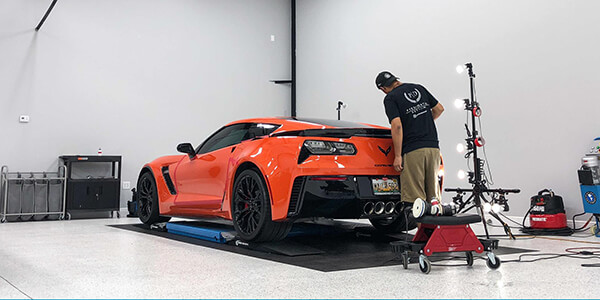
Generally, metallic paint comes with heavy consistency. So, applying it to vehicles will not require numerous numbers coats. Two and three coats are enough. Sanding over only one layer of metallic paint will not only damage the flake component but also harm the vehicle surface.
Hence, to clear out things first, you need to get 3 wet coats at least. Or 4 wet coats maybe work great if you want a heavy and smooth coating finish. Read Also: Single Stage Vs Two Stage Paint – Difference & Which is Better?
2. Wet Sanding Process:
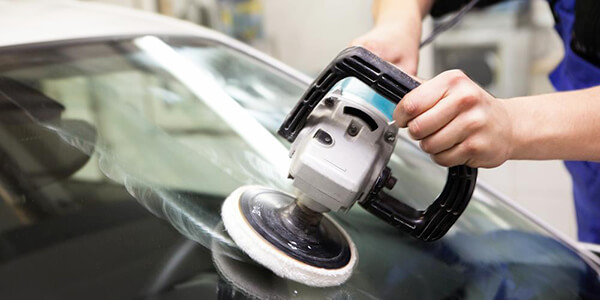
Now, it is time to wet sand the coat. To wet sand a certain thing, you need to pick the right sandpaper no matter what. Only the right grit sandpaper can offer you a perfect finish. However, the grit rate of sandpaper mostly depends on the material you are going to sand over.
Since we are going to wet sand over the metallic base coat, you must start with extremely fine sandpaper. Hence, grab 1000-grit sandpaper. Or 1200-grit sandpaper will be better. This sandpaper has smaller abrasive particles. Hence, it won’t hurt the metallic base coat much.
Now, detect the undesirable areas where it requires sanding and start sanding with our mentioned grit sandpaper. Gradually, when you are almost done, go with even finer sandpaper. Find sandpaper within 2200-2500-grit rate. To maintain the metallic base coat component, you need to go with sandpaper that has a fine to finer grit rate.
3. Re-Spray with Metallic Paint and Polish:
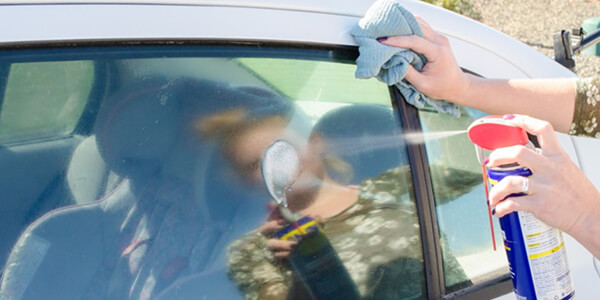
This is the last step after wet sanding the metallic base coat. When you are completing to sanding, wipe away the dirt with a rag. Then re-spray the surface again with metallic paint. you can also polish the area with the help of different polishing compounds.
There are wider ranges of grits available as polishing compounds. They come with several pads for easement of use. Use one of the compounds and polish the surface area of your car. Finally, apply a clear coat over the metallic base coat.
Tips:
- When you are in the process of wet sanding make sure you are careful with the edges.
- Always be careful with the sags. Make sure you do it right when you sand near sags.
- Re-coat is necessary to keep an even flop. So, do not forget the step.
- However, you can also sand and buff the metallic paint after applying a clear coat. It won’t affect the paint material.
Final Word:
Hopefully, you understand how to wet sanding metallic base coat? You must know have the proper knowledge about the coating. You need to follow the above 3 steps and it helps to get shiny looking at your car. Before wet sanding on coating, you must check all materials and good product to use. Thank you.
FAQs:
Question: Do you sand between coats of metallic paint?
Answer: Sanding over metallic paint coats is not a good idea. And sanding between the coats is actually not needed. Basically, applying metallic paint on the surface of any vehicle barely requires two or three coats at best. Since, after applying the metallic paint as the base coat, it will need a clear coat later.
However, you can sand and then buff after you apply the clear coat. Sanding over the clear coat will not affect the coats of metallic paint. So, sanding between coats of metallic paint is hardly required.
Still, if you find the necessity of sanding you can sand before applying the metallic paint base coat. Again, if you already have applied the base coat then wet sand the base coat and apply another level of the metallic paint layer. Finally, apply a clear coat.
Question: Can single-stage paint be wet sanded and buffed?
Answer: Single-stage paint can be wet sanded and buffed as long as it is not single-stage metallic paint. It is not recommended and also, not a great idea. Sanding on single-stage metallic paints means directly sanding on the metallic particle. Also, Wet Sanding on it will not be going to help. The abrasive reaction only ruins the shiny components of the metallic paint.
However, wet sanding single-stage paint requires a certain method with the right tools. In this method, the required materials are sandpaper and an electric buffer or sander. There are chances you might get carried away while sanding the paint by hand. That is why an electric sander is recommended. Also, use sandpaper of 2000-grade. It is the best-suited sandpaper for this purpose.
Now to buff out single-stage paint, you can follow a simple method. To accomplish this method, you will need a microfiber cloth. Polish lightly over the paint and also rub against it. If the cloth catches any color in it, then surely it is single-stage paint. by polishing the single-stage paint gradually, it will buff out the area.
Question: What grit sandpaper should I use for sanding metallic base coats?
Answer: If you want to sand on the metallic base coat, make sure you grab the right grit sandpaper. This task should be done carefully following the right method. Hence, the grit sandpaper mostly depends on the number of coats you are going to apply to the vehicle surface. If you want a smooth sanding process then a 4 layer of coating will be helpful enough.
In that case to sand it, start with 1000-grit sandpaper first. Then gradually, make it 2000-grit. At the end sand the metallic base coat with sandpaper of 2500-grit.
Last Updated on October 14, 2025 by Rogers Weber
[As an Amazon Associate I earn from qualifying purchases.]Related Posts

Powder Coat Vs Paint Wheels [Which is Most Durable]

7 Best Spray Guns for Clear Coat [2025 Review & Guide]
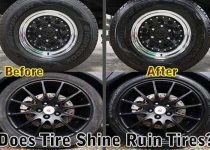
Does Tire Shine Ruin Tires or Cause Dry Rot [Full Guide]
About Author

Rogers Weber
Hi, I am Rogers Weber, the man behind Solvesonic. I am a mechanical engineer. I use many kinds of tools almost every day at my workplace. I love to write about tools, painting, home improvement, and DIYs. I enjoy helping people to solve their problems through my website. => Follow me on Twitter